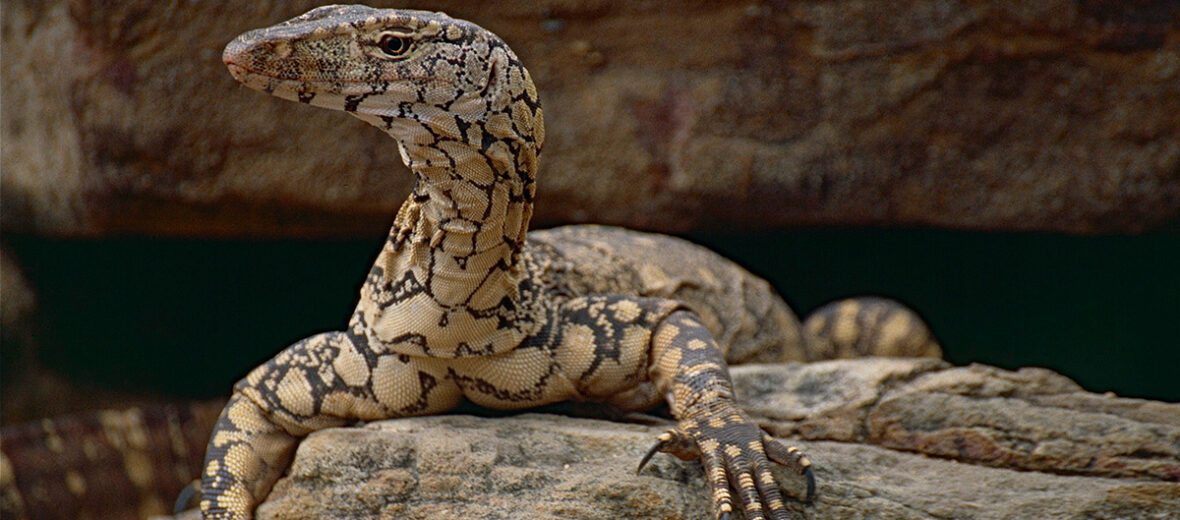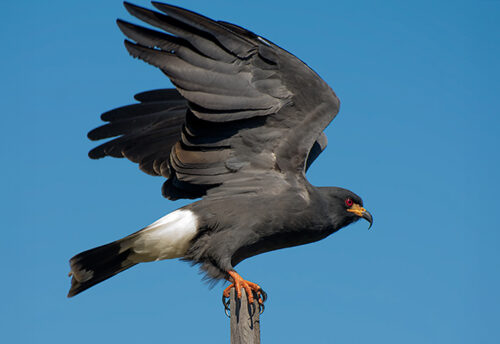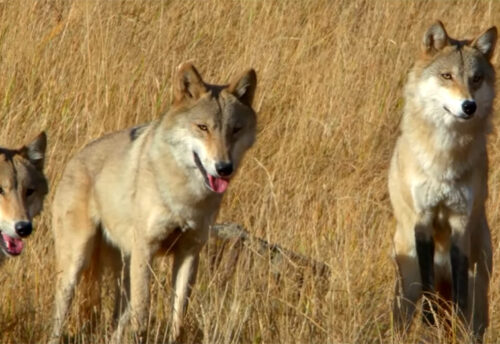
The perentie is the largest monitor lizard, aka goanna, in Australia. These giants can be found from western Australia, south Australia, the Northern Territory, and also into Queensland. They prefer desert habitats, rocky outcrops, and gorges, with hard-packed soil that contains loose stones. Not facing any threats, sans habitat loss, these lizards are listed as Least Concern by the IUCN. Their population trend is also considered stable.
First the Stats…
Scientific name: Varanus giganteus
Weight: Up to 44 lbs.
Length: Up to 8.2 feet
Lifespan: Up to 20 years
Now on to the Facts!
1.) These lizards are among the largest living lizards on earth, after the Asian water monitor, crocodile monitor, and of course, #1 – the Komodo dragon.
2.) Perenties are similar in size to the Nile monitor.
3.) Like other lizard species, they are shy and will flee upon seeing a potential human threat.
4.) With their long clows they are able to not only scale trees with ease, but can excavate burrows in minutes.
5.) In a behavior known as tripoding, these lizards have been documented standing on their hind legs to get a better view of their surroundings.
But wait, there’s more on the perentie!
6.) When sprinting, they can use all 4 legs or just their 2 hind legs. They can run upwards of 25 mph!
7.) If fleeing isn’t an option, they will stand their ground, inflate their throat and hiss loudly, bite, slash with their claws, and use their strong tail as a whip.
Did you know…?
These, as well as other monitors, are capable of producing venom. It was initially thought that the effects of their bite were from their saliva. It was later discovered that they do indeed have venom glands, called kundu.
8.) Due to the oral secretions from their mouth, they can deliver a painful and potentially septic bite. Plus, they have very sharp teeth and a powerful bite force.
9.) Their tail, used in offense as well as defense, is so powerful that they can break a dog’s leg with a single swipe!
10.) Once a prey item is subdued they will shake it vigorously until it’s dead, then, if possible, they will swallow it whole.
But wait, there’s still more on the perentie!
11.) The venom from their bite causes instant swelling, a drop in blood pressure, blood clot inhibition. muscle spasms, dizziness, muscular weakness, extreme pain in the extremities, facial and eye muscle pain, and respiratory distress and pain.
12.) Smaller perenties prey on insects, lizards, birds and their eggs, fish, turtle eggs, small animals like rats and rabbits, and even carrion (dead animals). Adults prey on wombats, small kangaroos, and will even go after lone dingoes.
13.) Many Aboriginal cultures have totemic relationships with these lizards, and they are part of their Ngiṉṯaka dreaming.
14.) Females lay up to 12 eggs that hatch in up to 12 months.
15.) Hatchlings are born precocial (self sufficient). There is no natal care and, in fact, the adults often prey on the hatchlings; even their own.
Now a Short Perentie Video!
Be sure to share & comment below! Also, check out the Critter Science YouTube channel. Videos added regularly!
Want to suggest a critter for me to write about? Let me know here.
Some source material acquired from: Wikipedia & IUCN
Photo credit: Bernard DuPont



